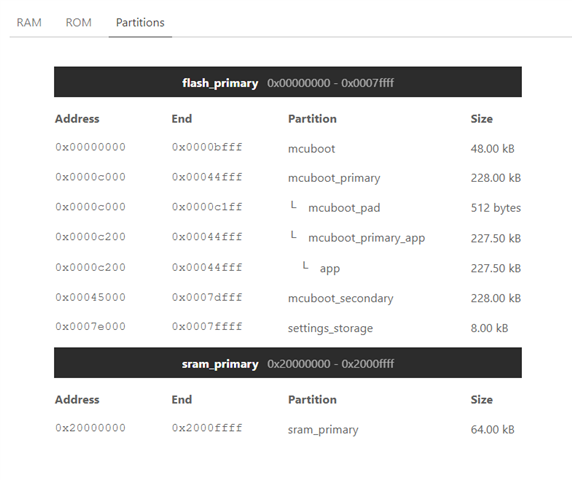Hi,
I'm trying to add BLE DFU to the nrf connect SDK sample "central and peripheral" for the nRF52832
I've done the following:
Add configurations to proj.conf
# Enable mcumgr. CONFIG_MCUMGR=y # Enable most core commands. CONFIG_MCUMGR_CMD_IMG_MGMT=y CONFIG_MCUMGR_CMD_OS_MGMT=y # Ensure an MCUboot-compatible binary is generated. CONFIG_BOOTLOADER_MCUBOOT=y # Allow for large Bluetooth data packets. CONFIG_BT_L2CAP_TX_MTU=252 CONFIG_BT_BUF_ACL_RX_SIZE=256 # Enable the Bluetooth (unauthenticated) and shell mcumgr transports. CONFIG_MCUMGR_SMP_BT=y CONFIG_MCUMGR_SMP_BT_AUTHEN=n # Some command handlers require a large stack. CONFIG_SYSTEM_WORKQUEUE_STACK_SIZE=4096
Created a directory child_image with an empty mcuboot.conf file
When I build it with the command:
west build -b nrf52dk_nrf52832 --pristine
I get the following error:
zephyr/zephyr_pre0.elf section `text' will not fit in regionFLASH' region `FLASH' overflowed by 27752 bytes
Looking at the resulting size with arm-none-eabi-size of the mcuboot zephyr.elf i get: text data bss dec hex filename
33082 500 23545 57127 df27 zephyr.elf
And the sizes for the central and peripheral without mcuboot:
Memory region Used Size Region Size %age Used
FLASH: 248516 B 512 KB 47.40%
Is there some memory allocated for the DFU slot which causes the overflow?
Thanks in advance,
Best Regards, Andreas



